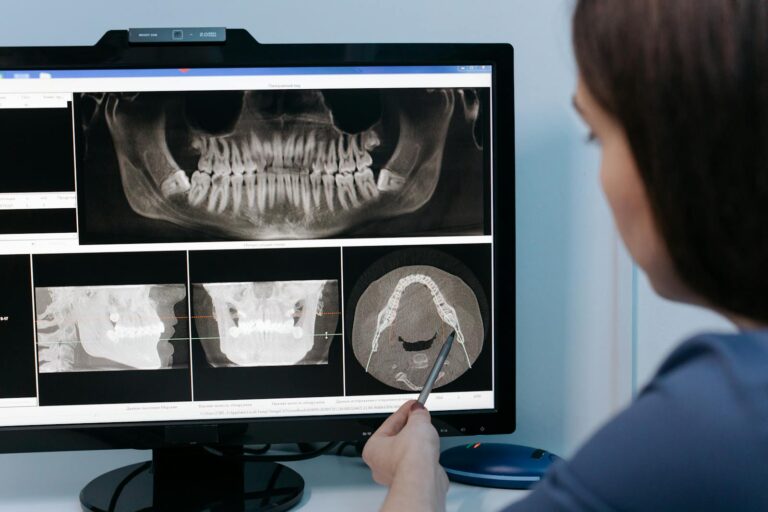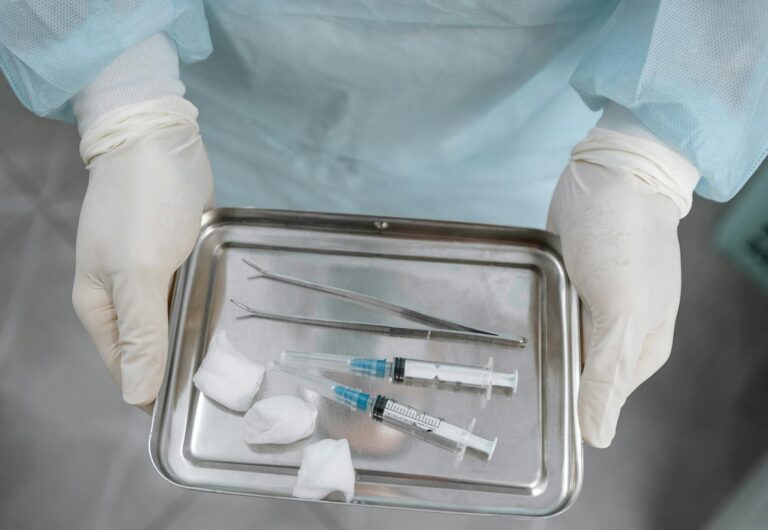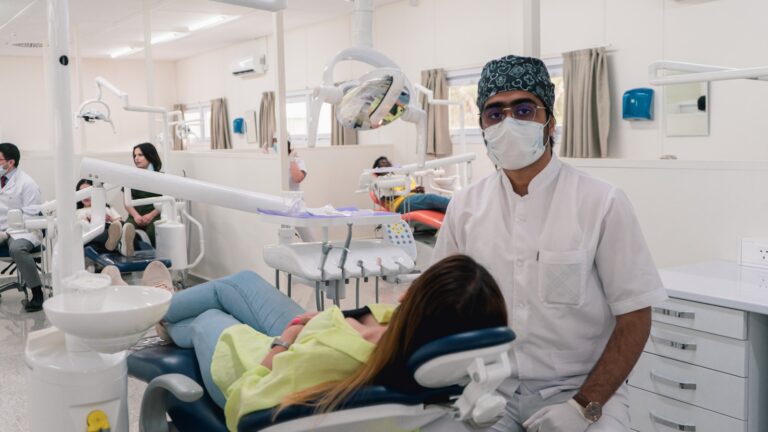Recovery Tips After Wisdom Teeth Surgery
Wisdom tooth surgery might be one of the most common oral surgeries—but that doesn’t mean recovery should be taken lightly. In fact, how you take care of yourself in the hours and days after your procedure can make the difference between a smooth, quick recovery and a painful, drawn-out one.
Whether you’re preparing for surgery or already healing, here are practical, dentist-approved recovery tips to help you bounce back faster, with less pain and fewer complications.
Follow Your Dentist’s Instructions
Let’s start with the most important advice: “do what your dentist tells you to do.”
Your oral surgeon or dentist will give you detailed instructions tailored to your procedure and medical history. These may include:
– When and how to take medications
– How long to fast before/after sedation
– What signs of infection to watch for
Ignoring or skipping any of these may seem harmless, but it can set you back days—or even lead to complications.
Manage Pain and Swelling Early
Pain and swelling after wisdom tooth surgery are not just expected—they’re part of the healing process. But that doesn’t mean you have to suffer through it. The key is to manage symptoms before they peak, rather than waiting until things become unbearable.
Here’s how to stay one step ahead:
- Take your pain medication on time, not just when it hurts.
Whether you’ve been prescribed medication or advised to use over-the-counter options like ibuprofen or acetaminophen, start taking them before the numbness wears off. This helps prevent a spike in pain once the anesthesia fades, and keeps inflammation under control from the start. - Apply cold compresses early and consistently.
In the first 24 to 48 hours, use an ice pack wrapped in a thin towel and gently press it against your cheek for 20 minutes on, 20 minutes off. This constricts blood vessels, reduces swelling, and numbs the area, offering natural pain relief. Rotate sides if both jaws were treated. - Keep your head elevated—even while you sleep.
Elevation helps fluid drain away from the surgical area. Prop yourself up with two pillows or sleep in a reclined position. Lying completely flat can actually make swelling worse and prolong your recovery. - Switch to warm compresses after 48–72 hours.
If you’re still feeling sore or stiff after a couple of days, it’s time to switch to gentle warm compresses. A warm, damp cloth can relax your jaw muscles and improve circulation, helping your body finish the healing process.
Being proactive with pain and swelling management not only makes you more comfortable, but it also reduces the risk of complications, like excessive inflammation or infection caused by delayed healing.
Eat Soft, Healing-Friendly Foods
Eating may not be the first thing on your mind after surgery—but your body needs fuel to heal. The trick is choosing foods that are nutritious, easy to eat, and kind to your healing mouth.
For the first few days, focus on:
- Mashed potatoes or mashed sweet potatoes – smooth, warm, and comforting
- Applesauce or pureed fruits – cool and gentle on sore gums
- Creamy soups and broths – room temperature, not hot, and full of nutrients
- Smoothies or protein shakes – blended with soft fruits and veggies (drink from a cup, not a straw!)
- Scrambled eggs, oatmeal, or yogurt – soft textures packed with protein or fiber
These foods require minimal or no chewing, and won’t irritate the sensitive extraction sites.
What to avoid (at least for the first 7 days):
- Hot or spicy foods – they can cause discomfort and disrupt healing
- Crunchy snacks like chips, crackers, or toast – sharp edges can scratch or reopen wounds
- Sticky or chewy foods like caramels or bread – they’re difficult to control and can get lodged in the socket
- Seeds, rice, and nuts – these tiny bits can easily get trapped in the healing sockets and lead to infection
Pro tip: Chew on the opposite side of your mouth if only one side was treated, and rinse gently with warm salt water after eating to keep the area clean.
Being intentional with what you eat doesn’t just protect your healing gums—it helps your body rebuild faster from the inside out.
Stay Away From Straws and Cigarettes
This might be one of the most underestimated—but most important—parts of your recovery.
After your wisdom tooth is removed, your body naturally forms a blood clot over the empty socket. This clot isn’t just a scab—it’s a vital part of the healing process. It protects the exposed bone and nerve endings underneath, and serves as the foundation for new tissue to grow.
Now here’s the problem: any suction movement in your mouth—like sipping through a straw, smoking, vaping, or even spitting forcefully—can pull that clot right out, exposing the socket before it has a chance to heal properly.
When that happens, you risk developing dry socket (alveolar osteitis), a painful condition that occurs when the socket is left exposed to air, food, and bacteria. Dry socket typically causes:
- Intense, radiating pain that can extend to the ear, jaw, or temple
- Bad breath or a foul taste in the mouth
- A visible socket that looks dry, with no protective clot covering it
And the pain? It’s often described as much worse than the extraction itself.
To prevent this complication, strictly avoid suction-based activities for at least 5–7 days, or as long as your dentist recommends. That means:
- No drinking through straws (yes, even for smoothies or shakes!)
- No smoking or vaping, as these not only cause suction but also introduce toxins that delay healing
- No forceful spitting—after rinsing, just let water or saline solution gently fall out of your mouth without pressure
If you’re a smoker, this is a great time to take a break—or even better, use the recovery period as a motivation to quit entirely.
Rinse Gently, Starting Day Two
Keeping your mouth clean after wisdom tooth surgery is important—but timing and technique are everything.
For the first 24 hours, avoid rinsing your mouth altogether. Why? Because your body is forming the blood clot that seals the socket, and any movement—even something as simple as swishing water—can interrupt this delicate process.
Once you’ve passed the 24-hour mark, you can begin gently rinsing with a saltwater solution:
- Mix ½ teaspoon of salt into a glass of warm (not hot) water
- Gently swish the solution around your mouth for 30 seconds
- Do not spit forcefully—simply open your mouth and let the water trickle out
This simple rinse can make a big difference. It helps to:
- Flush out food debris and bacteria from around the surgical area
- Soothe sore or inflamed tissue
- Promote a cleaner, faster healing environment
Aim to rinse 2–3 times a day, especially after meals, to keep the area fresh. But remember—this should always feel gentle. If you’re rinsing so hard that it feels like exercise, you’re doing too much.
Saltwater rinsing is a small step, but when done correctly, it’s one of the most effective tools in your recovery toolkit.
Rest (But Don’t Be Inactive)
After wisdom tooth surgery, your body needs rest—it’s using a lot of energy to repair tissue, control inflammation, and rebuild what was disrupted. But resting doesn’t mean you should remain completely inactive or bedridden all day.
In fact, too much immobility can increase the risk of swelling, stiffness, or even rare complications like blood clots, especially if multiple teeth were removed or if sedation was used during surgery.
Here’s how to balance healing with healthy movement:
- Rest smart, not flat: Prop your head up with two pillows while lying down or reclining. Elevating your head reduces blood flow to the face, which helps minimize swelling and discomfort.
- Avoid vigorous activity for at least 3 to 5 days: This includes running, weightlifting, yoga, or any activity that raises your heart rate significantly. Increased blood pressure in the first few days can lead to more bleeding or disturb the clot.
- Incorporate light walking: Gentle movement, like walking around the house every couple of hours, helps stimulate circulation, supports your metabolism, and improves your overall sense of well-being.
- Listen to your body: If any movement makes you feel dizzy, light-headed, or increases pain around the surgical site, stop and rest.
Bottom line: allow yourself time to rest, but don’t become too sedentary. Recovery is about progress, not perfection.
Watch for Signs of Trouble
Some discomfort is normal—aching, swelling, and mild soreness are to be expected after oral surgery. But it’s important to know when symptoms cross the line from normal healing into potential complications.
Watch out for these warning signs that something may be wrong:
- Pain that worsens after day 3, especially if it was improving before
- Swelling that’s increasing, instead of going down each day
- A foul odor or persistent bad breath, which could indicate infection
- A sour, metallic, or unpleasant taste that doesn’t go away with rinsing
- Pus or visible discharge from the extraction site
- Fever, chills, or general fatigue, which may signal a systemic infection
- Bleeding that won’t stop, or blood-soaked gauze several hours after surgery
One of the most painful conditions to watch for is dry socket, which typically appears 3–5 days after surgery. If you feel a sudden spike in pain—especially sharp, throbbing pain that radiates to your ear or temple—it may be a sign that the protective clot has been lost.
Don’t wait it out. Call your dental office immediately if any of the above symptoms occur. Most issues are easy to manage when caught early, but delaying treatment can prolong your discomfort and slow your healing.
Go to Your Follow-Up Appointment
Even if you feel like you’re healing well, your follow-up appointment plays a vital role in making sure everything is progressing as expected.
At this visit, your dentist or oral surgeon will:
- Inspect the surgical site to confirm the tissue is healing properly
- Remove any stitches if they’re non-dissolvable
- Clean out trapped food particles or debris, which you may not be able to see or reach
- Catch early signs of complications like infection, dry socket, or delayed healing
This appointment is your opportunity to ask questions, discuss any lingering discomfort, and receive reassurance that everything is on track. Even if everything feels fine, a professional eye may catch subtle issues you wouldn’t notice.
So don’t cancel it just because you’re “feeling okay.” Think of the follow-up as your final checkpoint to a fully healthy, pain-free recovery.
Final Thoughts
Healing from wisdom tooth extraction isn’t just about waiting it out—it’s about **active recovery**. That means treating your body with care, following instructions, and staying alert to your symptoms.
The first 3–5 days are the most important. Be gentle with yourself, eat soft, stay hydrated, and don’t rush back into your routine. With a little patience and the right approach, you’ll be back to normal in no time—and your future self (and smile) will thank you for it.






